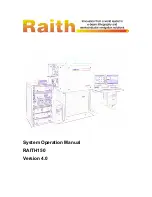
1.
Firmly mount the Sampling-T in the taper on top of the case.
2.
Switch the instrument ON using the switch located on the end, nearest the display. The LCD at
the top of the monitor will read a high number, which will rapidly fall.
3.
A new mini-mouthpiece should be fitted to the Sampling-T for each new user.
4.
The unit should be allowed to “warm up” until the display shows 000 ±. If this is not achieved
within two or three minutes please refer to the “Display re-zeroing “ section.
5.
The subject should take in a deep breath, hold it for 10 seconds and then breath out slowly
through the mouthpiece over a period of 20 seconds or more.
6.
Record the highest reading indicated on the display after completing the blow.
Changes in the ambient operating temperature or CO level can cause small drifts in the
instrument zero. If adjustment is necessary, slowly move the small slider control, adjacent
to the liquid crystal display window, until the display shows all zeros. If the instrument will
not zero, possible causes are high ambient levels of CO, faulty calibration or equipment
malfunction. To eliminate the possibility of the high ambient level, the unit should be
removed to another location and zeroing attempted again.
Introduction
How to operate
Display re-zeroing
Note: Any unauthorised changes to the BreathCO device may compromise product
safety and/or data and as such Vitalograph cannot be held responsible and the
device will no longer be supported.
INDICATIONS FOR USE
The Vitalograph BreathCO
™
Monitor is a small handheld instrument which is used to measure
levels of breath carbon monoxide which is the level of carbon monoxide (CO) in a person's
exhalation. This can be used in a variety of professional healthcare environments, e.g. primary care,
hospitals and occupational health centres.
This display indicates parts per million (ppm/
μL/L
) of carbon monoxide. It is considered to be
the single most effective motivational tool in smoking intervention. Equally importantly, weekly
follow-up after smoking cessation will detect and therefore deter relapse.






















